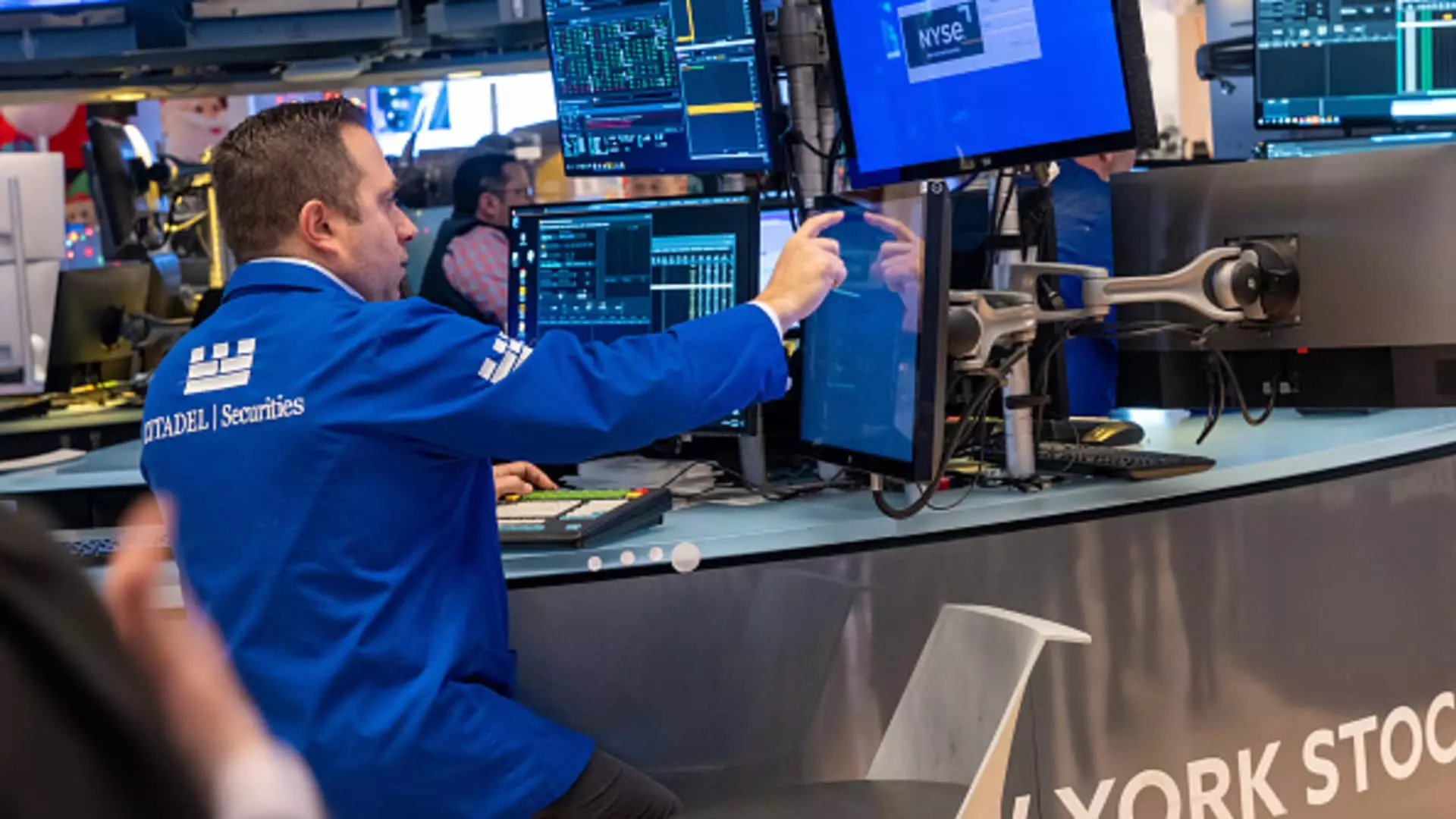The financial landscape faced upheaval last Friday, following the release of an unexpectedly robust jobs report which sent shockwaves through Wall Street’s previous optimism regarding interest rate cuts. With the Dow Jones Industrial Average sinking by 592 points, or 1.4%, and both the S&P 500 and Nasdaq Composite also experiencing losses of approximately 1.3%, the day represented a significant downturn for major indices, marking a rough start to 2025.
Robust Job Creation and Its Implications
December’s labor statistics revealed a surprising surge in U.S. payrolls, which grew by 256,000—far exceeding the anticipated rise of 155,000 as predicted by economists surveyed by Dow Jones. Additionally, the unemployment rate dipped to 4.1%, a slight yet noteworthy decrease from the expected steady figure of 4.2%. Such data typically heralds a thriving economy, yet in the eyes of investors, it spooked markets. This is largely due to the potential for the Federal Reserve to rethink its approach to interest rates amidst stronger-than-expected growth indicators.
The palpable increase in the yield on the 10-year Treasury note, reaching levels not seen since late 2023, further compounded concerns for investors. Scott Wren, a senior market strategist at Wells Fargo Investment Institute, aptly encapsulated the sentiment, stating, “Good news for the economy but not for the markets, at least for now.” This assertion highlights a dissonance between economic indicators and market performance, a phenomenon that often occurs when positive data implies a tightening monetary policy.
Market participants exhibited a significant recalibration of their expectations following the employment report. Current trading reflects a striking 97% probability that the Federal Reserve will choose to maintain rates during its upcoming meeting in January. This shift in outlook has further eroded prospects for a possible cut in the March meeting, with odds dwindling from 41% to about 25%. The Fed’s previous rate reduction by a quarter-point in December appears to have done little to calm apprehensive traders now grappling with fears of prolonged elevated borrowing rates.
This sense of uncertainty was underscored by additional data from the University of Michigan, whose consumer sentiment index fell short of predictions, further heightening inflation concerns. The index recorded 73.2 for January—below the Dow Jones estimate of 74—indicating a growing public apprehension towards inflation, particularly with one-year inflation expectations climbing to 3.3% from 2.8%.
Amid these developments, growth stocks bore the brunt of Friday’s sell-off, particularly those in technology sectors more sensitive to interest rate fluctuations. Notably, chipmakers like Nvidia, AMD, and Broadcom saw declines of 2.5%, 5.2%, and 2.1%, respectively. Such drops reflect a broad-based flight from sectors that might witness impaired performance should borrowing costs rise in tandem with investor caution.
Additionally, small-cap stocks suffered, mirrored by a dismal performance from the Russell 2000 index, which fell by over 2%. Adam Turnquist, LPL Financial’s chief technical strategist, articulated a crucial point in this narrative, suggesting that the increasing rates are indicative of an economy that is outperforming expectations. Turnquist warned that the current environment of rising yields suggests a potential for equity market corrections, but he remained optimistic about long-term prospects. “Ultimately, that means the potential for better earnings, less risk of a recession,” he noted, underscoring the dichotomy investors face.
End-of-Week Reflections
In the wake of these events, all three major indices ended the week lower, with the S&P 500 down by 1.8% and the Nasdaq Composite experiencing a more pronounced drop of 2.4%. The Dow, encompassing 30 of the largest U.S. companies, is on course to decline by 1.6%. This stark market reaction to positive economic indicators serves as a timely reminder of the unpredictable dynamics between economic fundamentals and short-term market movements.
Investors find themselves navigating a complex landscape where strong job growth can lead not only to optimism regarding recovery but also anxiety about monetary policy shifts. In an ever-evolving economic climate, understanding these nuances is crucial for prudent investment strategies moving forward.

